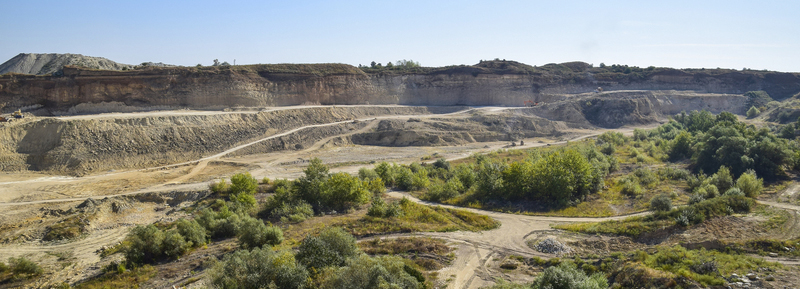NJ PACT Update: New Jersey Announces CO2 Emissions Limits for Stationary Sources
During the first term of New Jersey Governor Phil Murphy, his administration announced ambitious plans both to reduce emissions of greenhouse gases responsible for climate change and to change land use rules to mitigate the effects of rising sea levels and other effects of climate change. The State dubs this initiative “NJ PACT—New Jersey Protecting Against Climate Threats.”
On December 6th, in the waning days of Murphy’s first term and before the start of his second term, the New Jersey Department of Environmental Protection (NJDEP) proposed its most significant set of NJ PACT regulations to date, which focus on limiting emissions of carbon dioxide (CO2) from stationary sources. The proposed rule has three parts. First, it places emissions limits on CO2 from electric generating units (EGUs), i.e., the combustion or steam-generating equipment that generates electricity at power plants. These limits will become more stringent over time. Second, it creates a regulatory presumption that certain large boilers fired by fossil fuels should be replaced by electric boilers when they reach the end of their useful lives. Finally, the rule bans the sale and use of No. 4 and No. 6 fuel oil in New Jersey. This rule, each portion of which is described in more detail below, will have a significant impact in the coming years. Various elements of this wide-ranging rule will impact diverse industries, including energy, manufacturing, commercial real estate, education, and healthcare, to name a few. Parties that may be affected by the restrictions should consider whether to comment on the proposed rule or even start to plan for potential operational impacts of new regulation.
Emissions Limits for EGUs
The proposed rule sets CO2 emissions limits that gradually ratchet down over time for large fossil fuel-fired EGUs (i.e., EGUs with a nameplate capacity equal to or greater than 25 megawatt electric (MWe)) that provide electricity to the grid. According to the rule proposal, there currently are 94 individual EGUs at 33 different facilities that could be subject to the new emissions limits.
NJDEP proposes three tiers of emissions limits that these existing EGUs must meet. The first tier emissions limit is 1,700 lbs. of CO2 per megawatt hour of the EGU’s gross energy output (1,700 lb/MWh), which must be complied with before January 1, 2024. According to NJDEP, there are 12 EGUs in New Jersey that are fired by either coal, fuel oil, or older, less-efficient natural gas fired turbines that could not meet this limit, and these units meet a small fraction (less than 3%) of the state’s electricity demand. NJDEP presumes that some of these units will shut down because of the emissions limit, and so the rule proposal addresses the potential effects of “leakage,” which occurs when electricity generated out-of-state replaces in-state generation capacity to meet New Jersey’s demand for electricity. NJDEP has concluded that because the projected rate of CO2 emissions from the marginal unit in the PJM system, the electric grid serving New Jersey and several other states, would be below New Jersey’s first tier emission limit, leakage, if it occurs, would not lead to higher CO2 emissions.
The second tier emissions limit of 1,300 lb/MWh will go into effect on January 1, 2027, and NJDEP anticipates that it will have similar impacts on existing EGUs as the first tier limit. The rule proposal states that 14 existing EGUs accounting for less than 1% of New Jersey’s current electricity generation would be affected by the second tier limit. And, again, NJDEP concluded that leakage resulting from this emissions limit would not increase CO2 emissions.
The third tier emissions limit, 1,000 lb/MWh, becomes effective in 2035. This emissions limit is based on the current best available control technology, as the most efficient existing natural gas fired EGUs could meet this limit. NJDEP concluded that this limit would affect 40 existing EGUs that generate 9% of power produced in New Jersey.
The deadlines for compliance with each tier are not absolute. The proposed rule allows extensions where the New Jersey Board of Utilities, PJM, or NYISO, the grid operator in New York State that fulfills the same role as PJM in New Jersey, designates an EGU as necessary for reliable provision of electricity, or if the EGU is obligated to provide power under a power purchase agreement that was entered into before 2002.
The proposed rule also imposes emissions limits for new EGUs. Where the new EGU has a nameplate capacity greater than or equal to 25 MWe, its emissions limit for CO2 would be 860 lb/MWh. NJDEP states in the rule proposal that the most efficient natural gas fired combined cycle units installed in New Jersey after 2010 could satisfy this emissions limit. For a smaller new EGU with a nameplate capacity less than 25 MWe, the proposed rule imposes a CO2 emissions limit if the unit is located at an “EGU Facility,” which is a facility with more than one EGU where the aggregate capacity of all EGUs at the facility exceeds 25 MWe. These EGUs will be required to meet a “case-specific” CO2 emissions limit which must be based on technology “that will provide the greatest emission reductions that are technologically and economically feasible”; in addition, these EGUs cannot derive more than 50% of their heat input from coal or fuel oil, unless the EGU meets the emission standard for larger new EGUs, i.e., 860 lb./MWh.
Electrification of Large Boilers
Although it may be less impactful than the regulations on EGUs in terms of the total CO2 emissions that are affected, the portion of the proposed rule concerning commercial and industrial boilers will impact a larger swathe of regulated entities. The proposed rule applies to boilers with a maximum gross heat input rating equal to or greater than one million BTU per hour (MMBTU/hr) and less than five MMBTU/hr. Boilers of this size typically are used in commercial, industrial, and institutional contexts, which could include office buildings, manufacturing facilities, schools, or hospitals; the rule also implicates boilers in apartment buildings. Boilers with a maximum gross heat input rating of less than one MMBTU/hr are considered “insignificant sources” of air emissions under NJDEP’s rules, do not require an air permit under N.J.A.C. 7:27-8, and also are not subject to the proposed rule. Today, approximately 8,500 boilers would be subject to the proposed rule according to NJDEP.
The proposed rule imposes a presumption that new boilers with a heat rating between one and five MMBTU/hr installed beginning in 2025 should be electric, rather than being fired by fossil fuels such as natural gas. Facilities will not be permitted to install new fossil fuel boilers of this size unless (1) an electric boiler is “technically infeasible,” or (2) an electric boiler is infeasible for the particular facility because “any interruption in boiler operations caused by an electrical outage could jeopardize public health, life, or safety.” A hospital is given as an example of a facility that would satisfy the second condition. It remains to be seen how strictly the Department will interpret these infeasibility exceptions. For example, the proposed rule notes that a significant number of large boilers are used in schools, so would the temporary loss of heat in a school be considered to jeopardize public health, life, or safety? The language of the rule proposal suggests a narrow exemption, but it is also open to a broader interpretation that could result in more exemptions.
NJDEP makes clear in the proposed rule that existing permits, including general permits, for such equipment and renewals of those permits will not be affected by the proposed rule, so that the replacement of functioning fossil fuel fired boilers will not be required. Where the cost of maintaining an old boiler is less than the costs associated with a new, electric boiler, the proposed rule likely will lock in older infrastructure for some period, but eventually it will lead to the electrification of non-residential heating at the end of existing boilers’ life cycle.
Finally, the proposed rule imposes new reporting requirements on approximately 100 “boiler fleet” facilities, which have ten or more fossil fuel fired boilers, at least one of which has a heat input rating greater than one MMBTU/hr and at least one of which has a heat input rating less than five MMBTU/hr. Beginning in 2024, operators of boiler fleets must submit annual emissions statements to include, among other information, the potential to emit and actual emissions of CO2 from each boiler.
Ban on No. 4 and No. 6 Fuel Oil
As of its effective date, the proposed rule bans any person from selling, storing, delivering, or using No. 4 or No. 6 fuel oil in New Jersey. However, oil that was stored in New Jersey before the rule becomes effective may be used or sold in New Jersey for two years thereafter. The ban also does not apply to fuel oil used by ocean-going vessels in order to avoid a conflict with the federal Clean Air Act.
NJDEP contends that this portion of the proposed rule will have limited effects because these heavy fuel oils already largely have been phased out by facilities in New Jersey in favor of lighter fuel oils (i.e., No. 2 fuel oil) or other energy sources. Nonetheless, those facilities that still use these fuels (which, according to NJDEP, number less than 100) will need to change their operations in the coming years to comply with the ban.
Public Hearing and Comments on the Proposed Rule
A virtual public hearing on the proposed rule will be conducted on the morning of February 1, 2022. A public comment period for written comments will be open until March 6, 2022. Those considering a court challenge to the proposed rule would be well-advised to submit public comments, as New Jersey courts typically disfavor challenges mounted by parties who did not participate in the rulemaking process.
Following the close of the comment period, NJDEP will publish its responses to the public’s comments and any modifications it made to the proposed rule, and promulgate the final rule. Assuming the proposed rule survives any court challenges, operators of EGUs and large boilers and users of the soon-to-be proscribed heavy fuel oils now have several years to prepare for the operational changes that will be mandated by this NJ PACT rule.
For more information, please contact the author Michael Kettler at mkettler@riker.com or any attorney in our Environmental Practice Group.
NJ Takes Steps to Regulate Environmental Impacts of Cannabis
While entrepreneurs and investors rush to set up cannabis businesses throughout the Garden State, how will New Jersey regulate the environmental impacts of the industry?
As we discussed in our previous post — NJ Cannabis Industry to Focus on Environmental Considerations — most people fail to recognize the environmental impact of cannabis. In addition to being energy intensive, producing cannabis results in numerous issues related to water, air quality, and waste management.
While the New Jersey Cannabis Regulatory Commission ("CRC") now has adopted regulations relating to environmental impact and sustainability, many questions remain. (These regulations will be in effect for up to one year, and will empower the CRC to begin licensing cannabis businesses.)
Applicants and existing businesses alike should consult with appropriate professionals to understand and minimize environmental impacts — especially prospective businesses that will be participating in the competitive licensing process.
Environmental Impact and Sustainability Plans
In order to operate a cannabis business in New Jersey, businesses need to obtain one of the coveted licenses through the competitive licensing process. As part of the process, prospective cannabis businesses must prepare and submit an environmental impact plan. The environmental impact plan is evaluated and scored, and can impact whether an applicant receives one of the licenses.
Before the new regulations, there was very little information about the proper components of an environmental impact plan for cannabis businesses in New Jersey, primarily for two reasons:
- The adult-use cannabis law does not provide details regarding the components of environmental impact plans; and
- Environmental impact plans previously submitted to the New Jersey Department of Health under New Jersey’s Medical Marijuana Program have not been made public.
Fortunately, the new regulations provide some information regarding the appropriate elements of an environmental impact plan. Interestingly, the environmental impact plan requirements for a temporary license differ from those relating to standard licenses:
- Temporary license — Applicants seeking a temporary cannabis license are only directed to submit “an environmental impact plan, which includes consideration of sustainable alternatives to single-use plastic packaging.”
- Standard license — Applicants seeking a standard license are directed to submit “an environmental impact plan, which shall, at a minimum, include consideration of sustainable alternatives to single-use plastic packaging, efforts to minimize water usage, and any other factor required by the [CRC] . . . .”
The focus on single-use plastic packaging is consistent with New Jersey’s overall goal of reducing plastic waste in the Garden State (sustainable packaging alternatives might include reusable or refillable packaging, but this presents additional issues).
The new regulations also require cannabis businesses to create and implement environmental sustainability plans as a condition of receiving a license, which may include, but are not limited to:
- A waste reduction plan;
- A water usage reduction plan;
- Biodynamic farming;
- A sustainable packaging plan which reduces or eliminates the use of single-use plastics and promotes the use of recyclable or green packaging; or
- A plan to use some amount of renewable energy to power its operations.
Unfortunately, these provisions omit many relevant considerations, such as air emissions, climate change, and environmental justice. Given the anticipated competitiveness of the cannabis application process, prospective applicants should be as rigorous and comprehensive as possible in addressing environmental impacts. Further, it may be in the best interests of applicants to consider underlying environmental impacts. For instance, by focusing on soil health rather than biodynamic farming, applicants can show that they are getting to the heart of the problem.
To better understand environmental impacts and concerns, cannabis license applicants should refer to the National Cannabis Industry Association (NCIA), which issued a report in October 2020 titled Environmental Sustainability in the Cannabis Industry: Impacts Best Management Practices and Policy Considerations.
Essentially, cannabis businesses looking to operate in New Jersey should focus on environmental considerations early in the planning process, bringing together architects, engineers, and environmental professionals to identify and minimize environmental impacts.
Waste Disposal
One of the most important environmental impacts that other states have wrangled with is cannabis waste disposal. In fact according to the NCIA, “The environmental impact from the volume of cannabis byproducts currently estimated to be landfilled is equivalent to the emissions from more than 6,000 passenger vehicles’ or more per year.”
As discussed in detail in our prior post referenced above, the New Jersey Department of Health prescribed certain disposal and composting practices, and specifically allowed certain marijuana waste to be composted. However, much more needs to be done to reduce the environmental impact of cannabis waste. Unfortunately, the new regulations do not provide any additional information on acceptable cannabis waste disposal or recycling practices. As a result, it is unclear whether the prior policies will remain in place, or whether the CRC will issue further guidelines regarding the disposal of cannabis waste.
Hopefully, moving forward the CRC will embrace more environmentally friendly regulatory alternatives, including by increasing the types of wastes that can be composted and eliminating or reducing the requirement to mix cannabis refuse with other wastes.
Conclusion
The Garden State is about to get a lot greener. While many see lucrative business opportunities on the horizon, few entrepreneurs are aware of the environmental impacts. Left unconsidered, these impacts can impede an applicant’s ability to obtain a cannabis license in New Jersey. Our attorneys continue to follow these issues closely, and businesses should prepare to address environmental impacts early in the business development process.
See also Riker Danzig’s recent Alert, “Main Street Gets the Green Light,” which provides insights on the Cannabis Regulatory Commission’s first set of rules to regulate adult-use cannabis in the Garden State.
For more information, please contact any attorney in our Environmental Practice Group.
Environmental Justice Comes Early to New Jersey
New Jersey is no longer waiting to implement environmental justice requirements following surprise action by the New Jersey Department of Environmental Protection.
Since September 2020, the Garden State has been waiting for the Department to complete the gargantuan task of implementing the first of its kind Environmental Justice Law. The New Jersey law authorizes the Department to deny or condition certain permits for facilities that would have a disproportionate impact on an overburdened community. However, the substantive provisions of the law do not go into effect until the Department adopts regulations to implement the Environmental Justice Law. While the Department has gone to great lengths, including through a substantial stakeholder process, to develop implementing regulations, the regulations have not yet been proposed or adopted. (The regulations are expected to be proposed in late 2021 and adopted in late 2022.)
With the issuance of Administrative Order 2021-25 on September 22, 2021, certain aspects of the Environmental Justice Law are now in effect. The terms of the Administrative Order apply to:
- All facilities subject to the Environmental Justice Law, including:
- major sources of air pollution (i.e., facilities with Title V air permits, such as power plants);
- solid waste facilities;
- landfills;
- incinerators;
- sewage treatment facilities that process more than 50 million gallons per day;
- scrap metal recycling facilities; and
- other recycling facilities that process more than 100 tons per day.
- That seek covered permits in overburdened communities, which are mapped by the Department (these areas encompass 4.5 million people in 3,168 census block groups and 331 municipalities).
For these facilities, the Administrative Order:
- Extends the public comment period for relevant permits applications to at least 60 days, with a potential extension for an additional 30-day period upon the written request of a member(s) of the overburdened community;
- Requires a mandatory public hearing in a manner intended to maximize participation of individuals within the overburdened community;
- Encourages individuals to provide the facilities and the Department with information regarding existing conditions within the overburdened community and potential facility-wide environmental and public health stressors that could result in adverse impacts in the event of an approval;
- Requires the facility to respond to and address the concerns raised by individuals in the overburdened community and to conduct any additional analysis that the Department deems necessary for its review;
- Strongly encourages each facility to engage directly with individuals in the overburdened community in advance of, and in addition to, formal public comment, including providing relevant information related to facility-wide impacts; and
- Authorizes the Department to apply special permit conditions as may be necessary to avoid or minimize environmental or public health stressors.
The Order takes effect immediately and applies to all existing permit applications with open and unexpired public comment periods. The Order also reserves the Department’s authority to apply the terms of the Order to permit applications with closed or expired public comment periods.
In essence, the Administrative Order creates a process to implement the key components of New Jersey’s Environmental Justice Law—without rulemaking—but leaves many questions unanswered, especially given the significant complexity of the Environmental Justice Law and its implementation.
- The terms of the Administrative Order are only effective to the extent allowable by existing law; how will this limitation impact the terms of the Order and how aggressive will the Department be its implementation of the Order?
- Does the Order apply to the renewal of a Title V air permit?
- How will the Department apply the requirements of the Order to permit applications already submitted, including Title V air permit renewal applications, which can remain pending for a very long time?
- How will the Department use its claimed authority to require additional analyses and to impose permit conditions under the Order?
- When will the formal regulations be proposed and adopted to provide structure and certainty to this process?
If you own or operate a facility in an overburdened community or are considering development or acquisition of a facility in an overburdened community, you would be well advised to carefully consider the impact of this Administrative Order.
For more information, please contact any attorney in our Environmental Practice Group.
Guam v. U.S. and CERCLA Claims in New Jersey
Cost Recovery or Contribution? Impacts of Guam on the Timeliness of CERCLA Claims in the Third Circuit and New Jersey
The recently concluded Supreme Court term was an exciting one for environmental lawyers, as the Court in Guam v. United States made a rare foray into interpreting the Comprehensive Environmental Response, Compensation and Liability Act (“CERCLA”), specifically considering the impact of certain settlements on statutes of limitations under CERCLA. As in its 2004 decision in Cooper Industries v. Aviall Services, the Court’s interpretation of CERCLA in Guam differed from the previously prevailing interpretation of most federal circuits. That is, the Court overruled prior decisions of several federal circuits, including the Third Circuit, and held that settlements of liability under environmental laws other than CERCLA do not trigger a contribution claim under CERCLA section 113. In so doing, the Court revived Guam’s $160 million CERCLA claim against the U.S. government, which the lower courts had held to be time barred. For parties conducting cleanups within Third Circuit jurisdictions, Guam gives new life to CERCLA claims that might have been understood to be untimely, and it also has important consequences for parties seeking reimbursement for cleanup costs in New Jersey, particularly those with claims against the federal government.
The Supreme Court case centered on Guam’s Ordot Dump, at which the Navy allegedly deposited hazardous substances before ceding the dump to Guam as a public landfill. The United States Environmental Protection Agency sued Guam under the Clean Water Act for contamination caused by the landfill, which resulted in a 2004 consent decree. Then, in 2017, Guam sued the United States under CERCLA to recover its costs to clean up the landfill. Both the D.C. District Court and the D.C. Circuit dismissed Guam’s claim as untimely. First, the lower courts held that a cost recovery claim under CERCLA section 107 and a contribution claim under CERCLA section 113 are mutually exclusive remedies; that is, if a party could have brought a contribution claim, it cannot bring a cost recovery claim. Second, the 2004 Clean Water Act settlement made Guam a “person who has resolved its liability to the United States … for some or all of a response action or for some or all of the costs of such action in [a] settlement” under CERCLA section 113(f)(3)(B) and thus eligible to bring a CERCLA contribution claim as of 2004. Because the statute of limitations for a CERCLA contribution claim expires three years after a plaintiff enters into a qualifying settlement, Guam’s 2017 lawsuit was untimely.
The Supreme Court disagreed. The Court held that CERCLA contribution requires resolution in a settlement of CERCLA-specific liability, and Guam’s settlement under the Clean Water Act did not qualify.
The most direct consequence of Guam for litigants in Third Circuit jurisdictions is the revival of CERCLA claims that would have been classified as contribution claims and considered untimely. Guam overturns the Third Circuit’s holding in Trinity Industries, Inc. v. Chicago Bridge & Iron Co., 735 F.3d 131 (3d Cir. 2013), that a settlement with a state agency that did not resolve CERCLA liability can trigger a CERCLA contribution claim. After Guam, when these claims are categorized as cost recovery claims under CERCLA section 107, they will be subject to a longer statute of limitations—in most cases, six years following initiation of on-site construction of the remedial action—rather than the shorter statute of limitations for CERCLA contribution claims of three years following the entry into a settlement. The CERCLA contribution/cost recovery distinction is less important for litigants in New Jersey than for those in other states with respect to the timeliness of claims, as the New Jersey Spill Act provides a comparable remedy to CERCLA, and Spill Act claims are not subject to any statute of limitations following the New Jersey Supreme Court’s decision in Morristown Associates v. Grant Oil Co., 220 N.J. 360 (2015).
Nevertheless, parties with claims against the federal government for remediation costs in New Jersey should be particularly cognizant of the CERCLA issues implicated in Guam because the federal government likely has sovereign immunity from Spill Act claims, but not CERCLA claims. For example, the plaintiff in Cranbury Brick Yard, LLC v. United States, 943 F.3d 701 (3d Cir. 2019), lost its $56 million claim for contamination allegedly caused by the military because the claim was held to be a CERCLA contribution claim and, thus, untimely. (Notably, the result in Cranbury Brick Yard would have been the same even under the new Guam rule because the settlement with NJDEP that triggered a CERCLA contribution claim specifically resolved Cranbury Brick Yard’s CERCLA liability to New Jersey.)
The predominant “settlement” of liability for remediation costs in New Jersey is the covenant not to sue from NJDEP that accompanies a response action outcome under N.J.S.A. 58:10B-13.2. Under the Guam framework, the recipient of an RAO likely would have a CERCLA cost recovery, not contribution, claim because the covenant not to sue does not settle a CERCLA-specific liability. And, although Guam concerned whether a settlement triggered a contribution claim under CERCLA section 113(f)(3)(B), its reasoning would apply with equal force to determine whether a settlement grants contribution protection under section 113(f)(2). Thus, the recipient of an RAO likely could not rely on contribution protection from CERCLA claims by other potentially responsible parties. In contrast, the recipient of an RAO does benefit from contribution protection for Spill Act claims. N.J.S.A. 58:10-23.11f.a.(2)(b).
In Guam, the Supreme Court again overturned the CERCLA precedents of several circuits. Parties that have entered or will soon enter settlements with the government of liability for environmental remediation should be aware of the new regime established by Guam.
For more information, please contact the author Michael Kettler at mkettler@riker.com or any attorney in our Environmental Practice Group.
Biden Administration Attempts to Strengthen Current NEPA Environmental Review Process
In 2020, the Trump Administration restricted the environmental review process for major federal actions required under the National Environmental Policy Act of 1969 (“NEPA”) to essentially consider only the goals of the applicant; this was the first time a substantial change had been made to this process in over 20 years. To reverse this reduction in environmental protection, on October 7, 2021, the Council on Environmental Quality (“CEQ”) published a rule proposal requiring that reviews under NEPA include a broad range of environmental concerns, including climate change and environmental justice, priorities of the Biden administration. The current proposal would require that agencies meaningfully consider environmental, economic and social impacts in their NEPA review, which is not compelled under the present regulations, and consider whether there are alternatives that would lessen the impacts of a project. This is significant given the passage of the Infrastructure Bill through which $1.2 trillion of federal funding will be directed towards building things such as roads, bridges and port facilities, most of which will require NEPA review.
NEPA ensures that federal agencies evaluate the environmental effects of proposed federal actions, including federal authorization, implementation or funding of projects, and prepare Environmental Impact Statements (“EIS”) that identify not only potential concerns but also possible alternatives.. The recent CEQ rule proposal is Phase I of an initiative to restore robustness to the EIS process and includes: 1) a requirement that the justification for the EIS be based on more than just the goals of the applicant; 2) removal of certain limitations on the process that may restrict an agency’s ability to meet its mission through the EIS process; and 3) a return to the previous definition of “effects,” which will broaden the impacts that are assessed in the EIS.
Revisions to the Purpose and Need Statement
The purpose and need statement of an EIS sets forth the rationale for the agency’s action. To that end, it identifies the impacts the agency will evaluate and the parameters the agency will consider to support reasonable alternatives that may cause less environmental harm. The 2020 revisions to the NEPA regulations required the agency to base the purpose and need statement on the goals of the applicant, which clearly limited the scope of the review and essentially ensured approval without changes.
The CEQ is proposing to base the purpose and need statement on a variety of factors, only one of which is the goal of the applicant. Under the change, the agency can consider, among other things, environmental impacts, local economic need, regulatory requirements and the public interest. This change allows agencies to evaluate issues such as climate change and environmental justice, and consider alternative actions that may have less impacts. For example, when building a federally funded road, the NEPA review may identify the need to relocate a portion of the road if it is located in an area subject to flooding or may cause a disproportionate effect on overburdened communities, even though the initial proposed location may provide the fastest or shortest route. To be consistent, the CEQ also is making a conforming change to the definition of “reasonable alternatives” to exclude the limitation that such alternatives should again simply meet the goals of the applicant. These revisions will increase the range of factors and alternatives contemplated with respect to a federal action, and ensure that the public interest is a key consideration in the process.
Flexibility in the Process
Additionally, the CEQ is proposing to provide agencies the discretion and flexibility to develop procedures beyond the CEQ regulatory requirements. The 2020 revisions include language that if there is a conflict between the CEQ regulations and the agency’s NEPA procedures, the agency is required to follow the CEQ regulations. As such, under the 2020 rule, agencies were directed to eliminate procedures that are inconsistent with the CEQ regulations, which reduced agency discretion. In its current proposal, the CEQ proposes to remove this limiting language to allow agencies to consider all aspects in the EIS that are consistent with the agency’s mission; for instance, an agency may require additional public meetings or more specific evaluations of air or water quality. This change would allow each agency to identify and address the various priorities important to it. Although this may lengthen the review process for federal projects, it ensures that important issues are considered prior to developing these projects, like redirecting truck routes to reduce air pollution, avoiding sensitive environmental receptors or obtaining appropriate community input.
Changes to the Definition of “Effects”
Finally, the CEQ is restoring “direct” and “indirect” effects and “cumulative impacts” to the definition of "effect” or “impacts” that an agency is required to consider in the EIS. These terms drive the EIS analysis because they delineate what an agency must consider with respect to each major federal action.
“Direct” effects are things that occur at the time of the project, “indirect” effects happen later in time or are farther removed in distance, and “cumulative impacts” result from the incremental impacts of the action. The 2020 revisions eliminate the need to consider these effects or impacts and narrows the scope of the NEPA analysis. The CEQ’s changes would ensure that the EIS considers foreseeable future impacts such as those from greenhouse gas emissions. Moreover, the inclusion of “cumulative impacts” would allow agencies to consider how incremental impacts of proposed actions could contribute to greater environmental concerns such as climate change, biodiversity loss and environmental justice, and provide important information regarding the need for alternatives. The CEQ’s revisions would require that an agency’s review considers not only the direct impacts of the project on the environment, such as sediment control or pollution issues, but also evaluates the possible long term effects including loss of habitat, increased concerns for overburdened communities and the reduction of areas that could address flooding.
The CEQ’s recent rule revisions would broaden the environmental review under NEPA and are critical to the Biden Administration’s goal of bringing all environmental concerns to the forefront of any environmental impact analysis. Although NEPA may not stop a project from occurring, it can result in alternatives or revisions that may be less impactful, which is a key component in appropriately addressing current, ever-growing, complex environmental concerns associated with major federal actions, including the many projects that will stem from the Infrastructure Bill.
For more information, please contact the author Laurie Sands at lsands@riker.com or any attorney in our Environmental Practice Group.
The Importance of Avoiding Net Opinions in Environmental Cleanup Disputes
The Appellate Division’s unpublished decision in Meyer v. Constantinou, decided earlier this year, affirmed the exclusion of the testimony of an environmental expert as a “net opinion” for disregarding key facts and data without appropriate reasoning and justification.
Understanding the Admissibility of an Expert’s Opinion in New Jersey Courts
Rule 703 of the New Jersey Rules of Evidence provides that an expert must base his or her opinion on facts or data presented at or before trial. The corollary to Rule 703 is the “net opinion” rule, which requires an expert to explain why and how an event took place rather than merely provide a conclusion or “net opinion.” See Townsend v. Pierre, 221 N.J. 36, 53-54 (2015); Polzo v. Cnty. of Essex, 196 N.J. 569, 583 (2008); State v. Townsend, 186 N.J. 473, 494 (2006). An expert’s opinion becomes inadmissible as a “net opinion” if it is based on speculation, unquantified possibilities, or fails to make the connection between the incident and the resulting damages.
Federal courts use a formalized standard known as the “Daubert factors” as a means to determine whether or not expert testimony should be admissible at trial. In New Jersey, the Daubert factors are used as a “helpful - but not necessary or definitive - guide” for courts to consider when determining whether or not the expert opinion is admissible. In re Accutane Litigation, 234 N.J. 340 (2018). The admission or exclusion of evidence, as well as the determination of an expert’s credibility, ultimately lies in the sound discretion of the trial court.
Expert’s (In)Action in Environmental Cleanup
The opinion in Meyer v. Constantinou, No. A-1793-18, 2021 WL 1499851 (N.J. Super. Ct. App. Div. Apr. 16, 2021), while unpublished, sheds light on the problems that arise when an expert offers an unsupported, or net, opinion in an environmental cleanup dispute.
In Meyer, a gas station/auto repair shop discovered PCE contamination in the soil on its property when it was remediating chemicals that had leaked from its underground storage tanks. The gas station then initiated legal action against a dry cleaning facility located at a nearby shopping center. At trial, the gas station’s expert contended that the PCE contamination migrated downhill from the dry cleaner onto the gas station property. The court held the gas station failed to establish liability and ruled in favor of the defendants, in part because the gas station’s expert provided an inadmissible “net opinion” due to his failure to sufficiently support or explain his methodology.
Missing Samples and Making Assumptions - When the Facts and Numbers Don’t Add Up
On appeal, the Appellate Division affirmed the trial court’s view that the gas station’s expert had rendered an inadmissible “net opinion.” The court pointed out that the expert relied on a number of unfounded “facts” about the gas station property to support his causation opinion. For example, the expert assumed the PCE stemmed from the nearby dry cleaners because the gas station/auto shop did not use chlorinated solvents in its operations. Yet, a Preliminary Assessment of the contaminated property was never conducted, the prior contents of the waste oil tank and use of the tank by the former owners of the gas station were never confirmed, and the expert never validated the auto shop’s claim that it never used PCE. Similarly, the expert failed to provide sufficient objective data, such as the degree of slope and an assessment of the exact relative topographies of the two properties, to support his theory that rainwater carried PCE downhill from the dry-cleaners onto the gas station. The basis of the expert’s opinion on this point was limited to a single visual observation.
The expert also relied for his causation opinion on soil samples taken from the two properties, but the sampling data did not support his primary reason that the PCE came from the dry cleaners. That is, the expert opined that his isopleth map (a map that uses lines or colors to indicate areas with similar meteorological features) supported the opinion that PCE concentrations decreased as they moved closer to the gas station, explaining that the declining PCE gradients matched the topography. Yet, the expert did not consider the results of sampling taken from the excavation of the waste oil tank located only several feet from the auto shop building, which detected a substantial amount of PCE, and he acknowledged that if he had included the additional sample in his analysis, the isopleth map he drew would have been completely different.
Finally, the expert made statements about the dry cleaning operations that proved to be unsubstantiated, and he acknowledged he did not know how or when a discharge or spill occurred at that facility. The expert also assumed that the dry cleaners obtained a new dry-cleaning machine around the time of the discovery of the PCE contamination on the auto shop property, and opined that the new equipment was substituted for the prior machine due to the discharges of PCE. Yet, the facts revealed the dry cleaning machine was actually replaced many years after the PCE was first detected at the gas station/auto repair property. The expert had never inspected the dry cleaning equipment, and had never visited the dry cleaners except as a patron. Thus, the Appellate Division concluded that the expert’s opinion relating to the dry cleaning operations was speculative at best.
Ultimately, the Appellate Division affirmed the decision of the trial court that the expert’s opinion was an inadmissible “net opinion,” and it upheld the trial court’s judgment in favor of the defendants.
The Importance of a Good Expert
Meyer represents an important reminder that environmental consultants employed as experts in New Jersey courts must be able to apply their expertise to all the relevant evidence, and be able to justify the reliability of their methodology. Absent the clarity that comes though appropriate data, evidence, and methods that inform the conclusions, it is likely that an expert opinion will be excluded as a net opinion.
For more information, please contact the author Holli B. Packer at hpacker@riker.com or any attorney in our Environmental Practice Group.
If you have any questions about the issues discussed in this newsletter, please contact any one of the attorneys in our Environmental Group:
Jeffrey B. Wagenbach
Steven T. Senior
Alexa Richman-La Londe
Jaan M. Haus
Samuel P. Moulthrop
Dennis J. Krumholz
Marilynn R. Greenberg
Laurie J. Sands
Michael S. Kettler
Holli B. Packer










